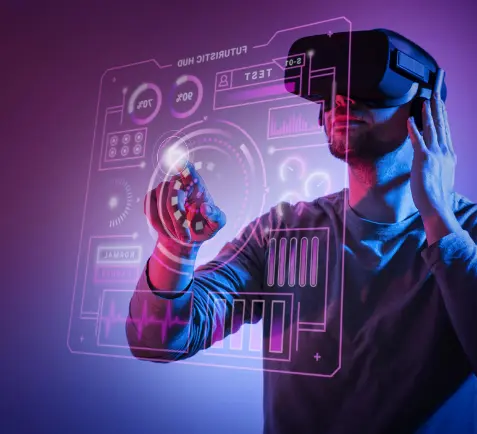The world is rapidly approaching a future where the distinction between the real and virtual worlds is becoming increasingly blurred. We’re heading toward a more connected world that has meaningful interactions between humans and machines. And 6G will accelerate this experience for the customers and businesses.
When it comes to technological innovations, advanced countries like U.S.-China have always been one step ahead. While majority of the globe is yet to experience 5G, US and China are racing to develop and patent the 6G network. Chinese organization, Huawei Technologies Co. predicts that 6G technology will enter the market by 2030.
Image Source: Nokia
3G enabled human mobile connectivity, 4G enabled social interaction, and 5G enabled IoT devices to sense and communicate. What about 6G?
In one of the recent videos posted by Nokia, Peter Vetter, president of Bell Research Labs Core Research Labs said, “6G will enable holographic communication as if people would be able to teleport to each other’s environment and work on the same thing as if they’re in the same room.”
6G network is anticipated to offer cost savings, 10 times lower latency, 100 times higher connection density, geo-location accuracy, etc. It will have space-air-ground-sea integrated networks to meet the global coverage demand. Satellite communication, UAV communication, and maritime communication will significantly expand the coverage range of wireless communication networks.
Image Source: Science China Information Sciences
Impact of 6G on Future Customer Experience:
6G will be 100 times faster than 5G and will enable data transmission within seconds. Let’s look at the impacts of 6G on the future customer experience.
- Seamless Phygital experience: With the 6G technology, embedded sensors will allow digital representations to construct digital twins of people, actual objects, and their surroundings, converging the physical and digital world. 6G will also boost the metaverse and mixed reality experiences for the customers by offering the required peed and efficiency required.
- Faster Speed: 6G will enable us to stream videos faster and download 100 hours of video within seconds. This will surely have numerous use cases for businesses to increase their efficiency and improve customer experience. For example, this can be highly useful for the insurers in making the claims process faster and more accurate.
- Intelligent and connected Devices: Experts predict that 6G will be able to support 10 times the number of devices and will be 100 times more reliable. The technology will build a more connected ecosystem where all the devices will be in sync with each other. For example, maybe the future self driving cars maybe able to know where other vehicles are. Instead of tracking high traffic locations, vehicles might be able to communicate and coordinate with each other and save travel time for riders. All this would be possible if the network connectivity is strong and fast.
- Real-time experience: We’ve been talking about meetings and storefronts in the metaverse. The world is moving into a space where there is no boundary between the two realities. Maybe a customer would want to visit the store in the comfort of his home, converse with the salesperson face-to-face and have a real-time experience.
Conclusion
Japan’s NTT DOCOMO has partnered with Nokia to start indoor 6G trials this fiscal year, and outdoor trials next year.
While there is still time for commercialization of 6G, it’s usage might turn science fiction into reality. Real-time holograms, flying taxis, and the internet-connected human brains might be the future. To facilitate the next-gen of technology, we need a next-gen network that could define the future of communication.
Knowledge thats worth delivered in your inbox




